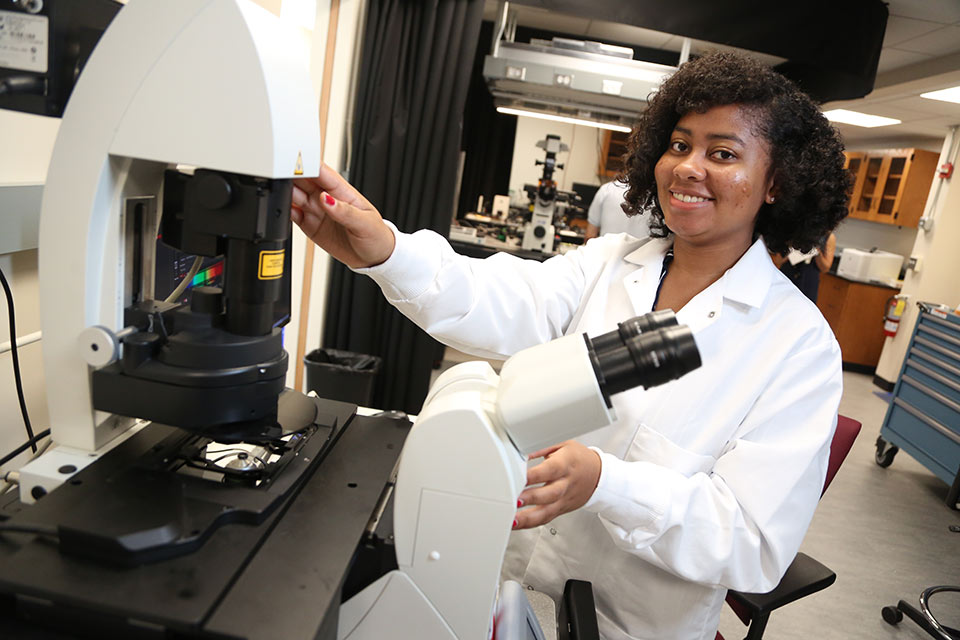Angelina Gallego

“‘Look at that Membrane!’ Understanding the Interactions Between Colloids and Lipid Stabilized Interfaces Using DNA”
Angelina Gallego*, Gael Prado, W. Benjamin Rogers
Abstract
Every cell in the human body contains a membrane that separates inside from outside. The cellular membrane also executes a wide variety of other notable functions, from transport of nutrients to sensing and responding to the outside environment. These functions are carried out by membrane proteins, which cannot act alone and need to organize into intricate structures to function. However, the process by which membrane proteins self-assemble remains unknown.
We have made progress developing a model system to study self-assembly of membrane bound objects. We use an emulsion of water and oil stabilized by phospholipids as our model ‘cell,’ and polystyrene colloids — micron sized plastic beads — as our model ‘proteins.’ Unlike real proteins, the colloids are large enough to be imaged with an optical microscope, yet small enough to still exhibit Brownian motion. Lastly, we use DNA hybridization to induce attractive interactions between the particles and the membrane: DNA strands grafted to the particles can bind to complementary DNA strands inserted in the membrane. This results in an adhesive interaction that is chemically specific and tunable: by changing the temperature only a few degrees, we can switch the interaction from very weak to effectively irreversible.
Preliminary experiments suggest that we can organize particles on a model membrane and we anticipate that our unique approach might ultimately help shed light on how objects organize on cell surfaces.
Support
MRSEC REU

